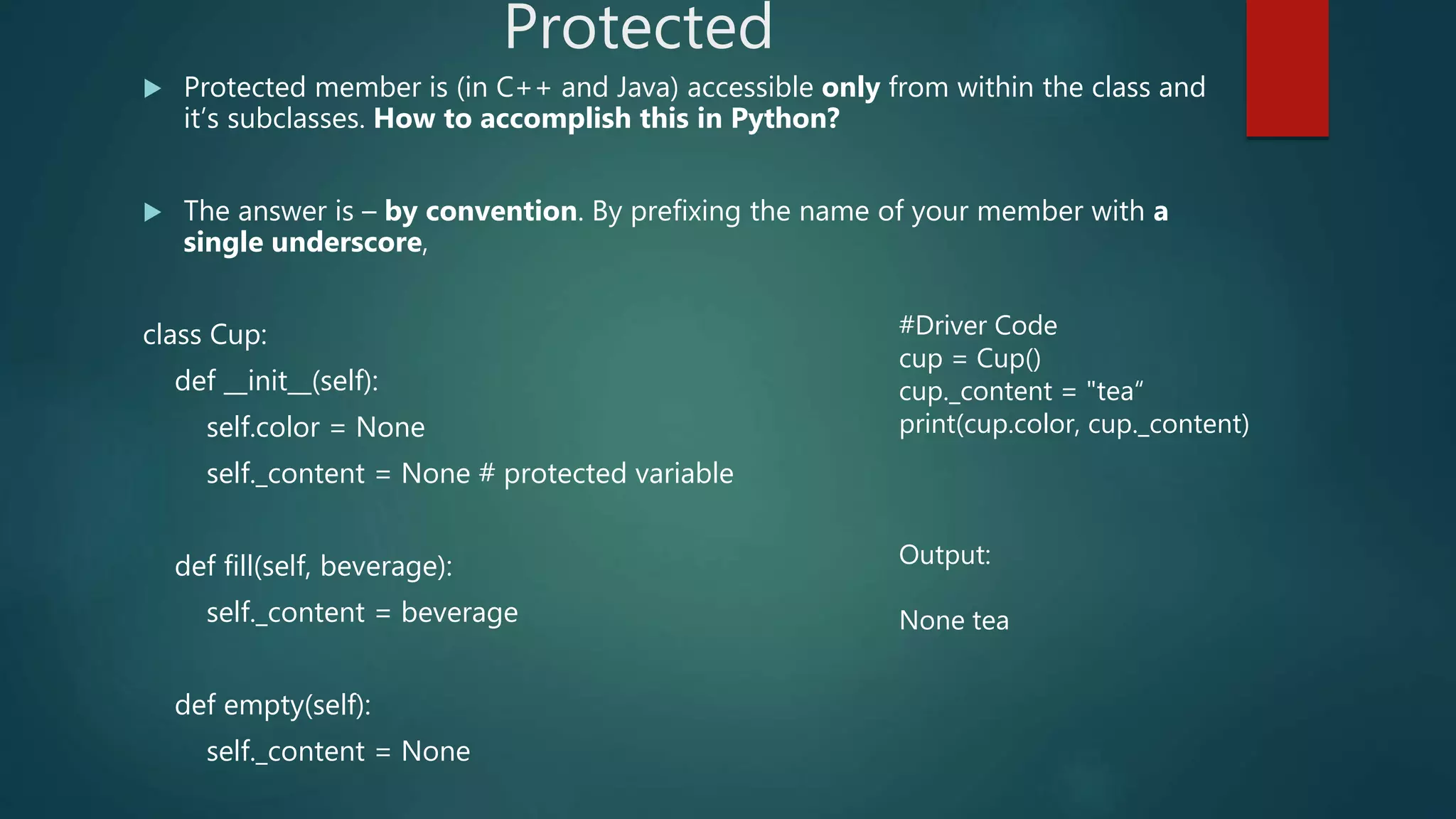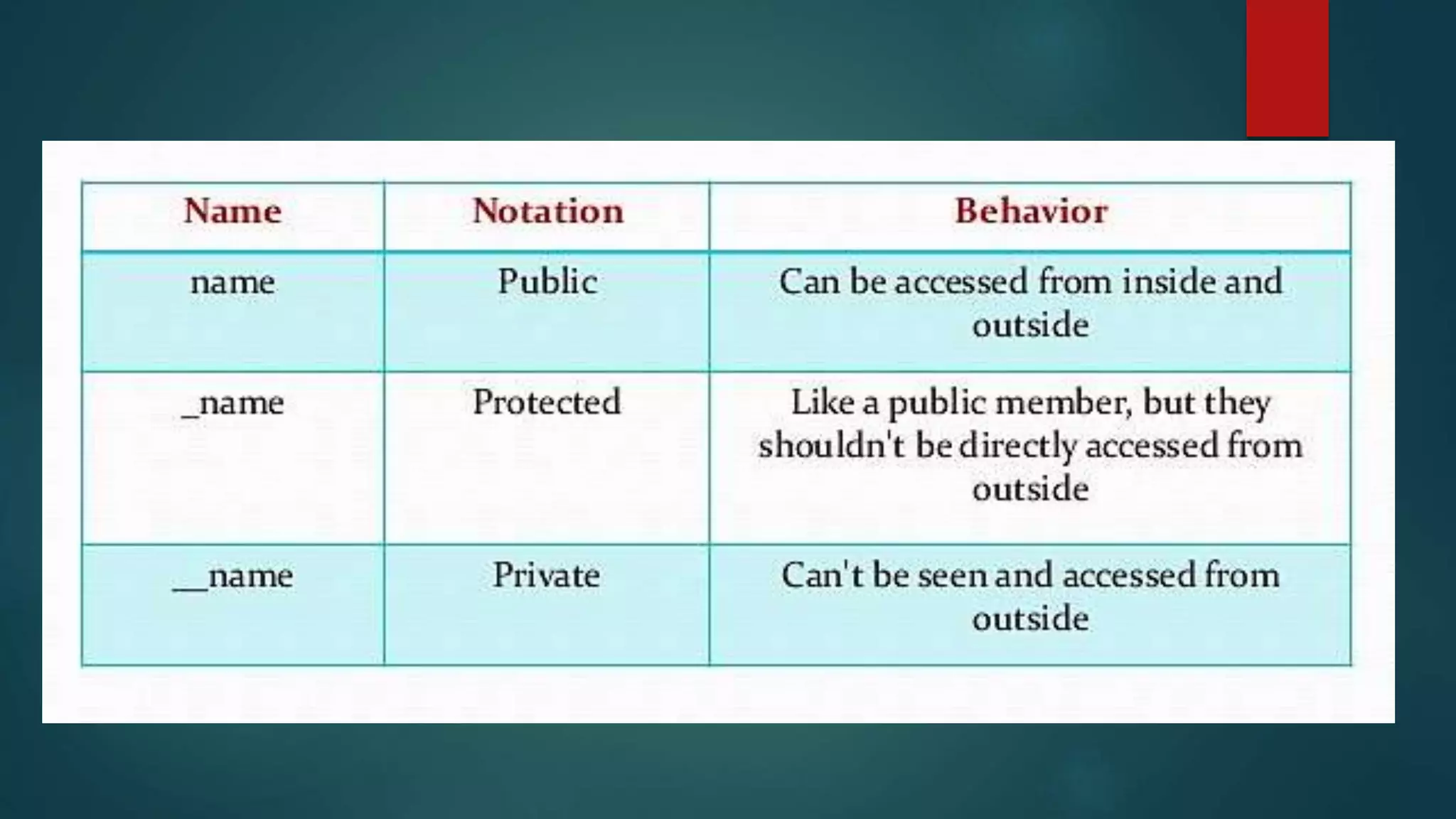1) In Python, all member variables and methods are public by default. To make a member protected, prefix its name with a single underscore. To make a member private, prefix its name with two underscores and suffix it with at most one underscore, which uses name mangling. 2) The document discusses access modifiers in Python including public, protected, and private access. It provides examples of declaring public members without modification, protected members by prepending a single underscore, and private members by prepending two underscores and optional postpending single underscore, which utilizes name mangling. 3) Name mangling is used to prevent private member clashes in subclasses by transforming the name to include the class name.




